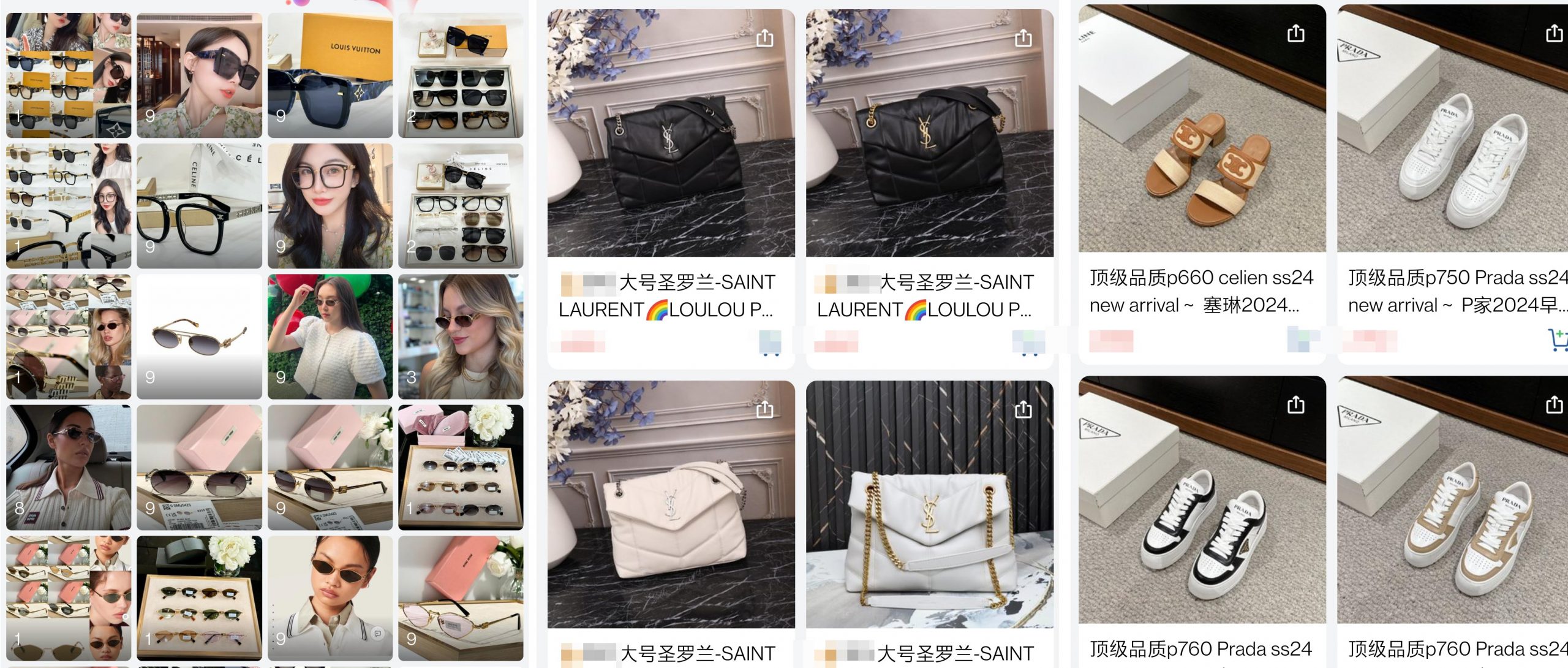Why Your Usual Product Selection Strategy Fails in the Designer-Inspired Industry
Before we dive in, one thing must be made clear: the product selection strategy for designer-inspired items is completely different from that of ordinary goods. If you’re someone who’s transitioning from selling general merchandise to this niche, let me warn you—ditch your old habits. Those tactics that once made you a “cross-border e-commerce boss” will only lead to failure and self-doubt in this space.
This game plays by a different set of rules. Today, I’ll break down a raw, fast, and effective product selection method—based entirely on my own hands-on experience. This isn’t theory. It’s field-tested strategy.
01. Stop Overthinking. Simplicity Wins.
There’s a saying in the cross-border world:
“30% is about operations, 70% is about product selection.”

It’s true—product selection makes or breaks you, especially in general merchandise, where you’re overwhelmed with SKUs. That’s why so many Shopify and Amazon sellers are obsessed with spy tools like JungleScout, Commerce Inspector, and all sorts of “horizontal/vertical expansion” theories.
But let’s be honest—most of those so-called “dry goods tutorials” online are just long-winded nonsense. They overcomplicate everything and leave you dizzy with spreadsheets and no real direction. I’ve seen sellers spend weeks studying methods that never convert.
What really works?
Simplicity. Judgment. Pattern recognition.
My most successful friends rely on manual selection, guided by deep industry experience and a sharp eye for trends—not tool overload.
And that’s even more true for the designer-inspired niche. Here’s why:
Why “Inspired Products” Are Different:
Fewer SKUs, so you’re not drowning in choices.
Built-in traffic, thanks to globally recognized styles.
Higher profit margins, even at lower volumes.
You don’t need 1,000 small orders a day. One quality item, priced right, can outperform a truckload of “low-AOV” generic goods.
02. Your Product Selection Toolbox (Real Tools That Work)
✅ 1. Suppliers Are the Fastest Shortcut
A good supplier is more than a source—they’re your intel agency. The right one can tell you:
Which models are selling right now.
What’s hot in which region.
Which styles get reordered constantly.
Pro tip: Don’t waste time with resellers or one-time operators. Find suppliers who move serious volume—they’ll have the data and price power you need.
If your supplier isn’t offering you product guidance, hot-sellers, and insider feedback… it’s time to find a new one.
✅ 2. YouTube: Your Unfiltered Trend Radar
Most people don’t realize this, but YouTube is a goldmine for product selection.
Search keywords like “Luxury Bag Haul,” “Best Designer Watches,” or “Affordable Alternatives,” and sort by views. You’ll spot:

Influencer-favorite models.
Which classics are still in style.
How viewers respond (comments/likes = real-time market data).
What’s better? Some influencers pass off inspired products as originals—which gives you a direct view of what’s moving, without calling it out.
Always cross-check the engagement metrics and affiliate landing pages—if a video’s pulling traffic and comments, that product is a solid contender.
✅ 3. DHgate: Read the Black Market
Yes, it’s chaotic. Yes, listings vanish fast. But if you know how to search smartly, DHgate reveals what’s trending right now.

Use niche terms and avoid brand names. Look for:
High sales in the past 30 days.
Volume spikes on specific SKUs.
Price points your own supplier can compete with.
But don’t copy-paste DHgate bestsellers—use them as directional clues. If a style is hot there, check if your supply chain can support it with better quality, pricing, or fulfillment.
✅ 4. AdSpy: Not Just for Ads
If you’re doing any form of paid ads, you should be using AdSpy anyway. But even if you’re not, it’s worth it just for product intel.

What to look for:
High-engagement ads for fashion/luxury goods.
Comment sections with demand signals (“Where can I buy this?” “Link pls!”).

Regional performance and ad age.
AdSpy’s official price is steep ($149/month), but there are API-based alternatives for under $25/month that offer 80% of the value.

✅ 5. Facebook Ad Library: Free, But Limited
Facebook’s own Ad Library is great for research, but it’s frustratingly flat. No sorting, no likes/comments view, and often out of context.

Use it to verify whether big brands or competitors are pushing a certain model. If someone’s running the same creative for 90 days straight—there’s a reason.
✅ 6. AI Tools: Use With a Grain of Salt
Yes, AI like ChatGPT can help—especially with:

Generating product copy.
Drafting ad hooks.
Brainstorming niche directions.
But don’t rely on it for specific trending SKUs—it’s not a crystal ball. Use AI as a booster, not your brain.
03. Long-Tail Legends: Classic Styles Never Die
You’ll notice something interesting: the bestsellers in this space aren’t always the newest drops. Often, it’s the old classics that keep returning.
Think:
-
The LV Monogram.
-
Gucci Marmont.
-
Chanel Flap Bag.
These icons have what I call long-tail heat—they don’t explode overnight, but they sell steadily year after year.
But here’s the trap: because everyone wants in on them, they become price-competitive bloodbaths. If your supplier can’t match that bottom price, don’t force it.
Instead of fighting over Chanel, look for overlooked gems like Fendi, YSL, or Valentino.
Smaller SKU pools, less competition, more room to profit.






